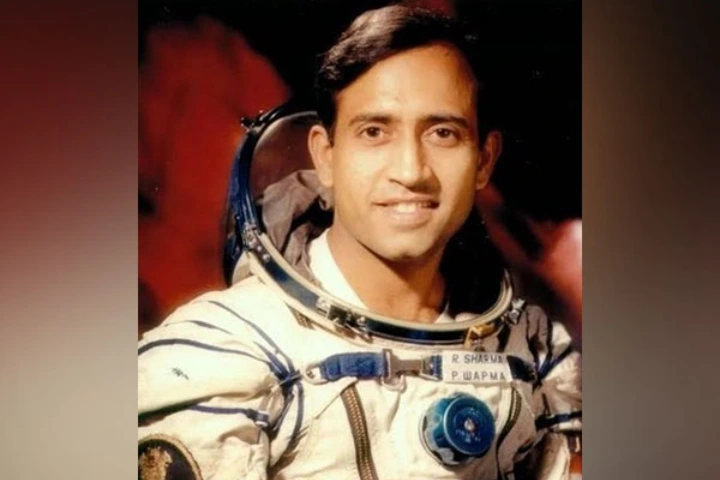The Indian Air Force on Wednesday paid tribute to Wing Commander Rakesh Sharma, the only Indian to have gone into space on the anniversary of his space journey on this day, 40 years ago.
Exactly 40 years ago, on April 3, 1984, Sharma scripted history by becoming the first Indian to reach outer space on board the Soviet rocket Soyuz T-11.
The IAF, in a post on X, said, “As #India charters its path towards the #Gaganyaan Mission, on this day, we remember the heroic space flight undertaken by then Sqn Ldr Rakesh Sharma. The first Cosmonaut of India, Sqn Ldr Rakesh undertook his space journey on this day, 40 years ago.”
As #India charters it path towards the #Gaganyaan Mission, on this day, we remember the heroic space flight undertaken by then Sqn Ldr Rakesh Sharma.
The first Cosmonaut of India, Sqn Ldr Rakesh undertook his space journey on this day, 40 years ago.#सारे जहाँ… pic.twitter.com/Svcm1Gm1uG— Indian Air Force (@IAF_MCC) April 3, 2024
The IAF also wrote a line of the very famous patriotic song ‘Saare Jahan Se Achcha’ written by poet Allama Iqbal, the same one quoted by Rakesh Sharma when asked by then Prime Minister Indira Gandhi how India looked from space.
Sharma went on to become the first Indian citizen to reach outer space on April 3, 1984, when he flew aboard the Soviet rocket Soyuz T-11 launched from Baikonur Cosmodrome in the Kazakh Soviet Socialist Republic.
He spent 7 days, 21 hours and 40 minutes in space and took India to become the 14th nation to travel to outer space.
The Soyuz T-11 spacecraft carrying cosmonauts including Sharma docked and transferred the three-member Soviet-Indian international crew, consisting of the ship’s commander, Yury Malyshev, and flight engineer, Gennadi Strekalov, to the Salyut 7 Orbital Station.
Sharma conducted several scientific studies and experiments, his work including remote sensing and bio-medicine. The crew even held a conference with officials from space.
Sharma was conferred the honour of the Hero of the Soviet Union upon his return from space. He remains to date the only Indian to have been conferred this honour. India also conferred its highest peacetime gallantry award, the Ashoka Chakra to Rakesh Sharma.
Recently, five years after announcing India’s human spaceflight programme, Prime Minister Narendra Modi in February this year bestowed astronaut wings to four astronaut-designates for the Gaganyaan mission, the country’s first human spaceflight mission.
The four chosen Indian Air Force pilots are Group Captain Prashanth Nair, Group Captain Ajit Krishnan, Group Captain Angad Pratap, and Wing Commander Shubhanshu Shukla. The four astronauts were trained at Yuri Gagarin Cosmonaut Training Center in Russia.
Gaganyaan project envisages a demonstration of human spaceflight capability by launching a crew of three members to an orbit of 400 km for a three-day mission and bringing them back safely to earth, by landing in Indian sea waters.
The pre-requisites for the Gaganyaan mission include the development of many critical technologies including a human-rated launch vehicle for carrying the crew safely to space, a Life Support System to provide an earth-like environment to crew in space, crew emergency escape provision and evolving crew management aspects for training, recovery and rehabilitation of crew.
Various precursor missions are planned to demonstrate the Technology Preparedness Levels before carrying out the actual Human Space Flight mission. These demonstrator missions include the Integrated AirDrop Test (IADT), Pad Abort Test (PAT) and Test Vehicle (TV) flights. The safety and reliability of all systems will be proven in unmanned missions preceding manned missions.
LVM3 rocket – The well-proven and reliable heavy lift launcher of ISRO, is identified as the launch vehicle for the Gaganyaan mission.




















